Christopher Hector sits in on a feast of wonderful horses…
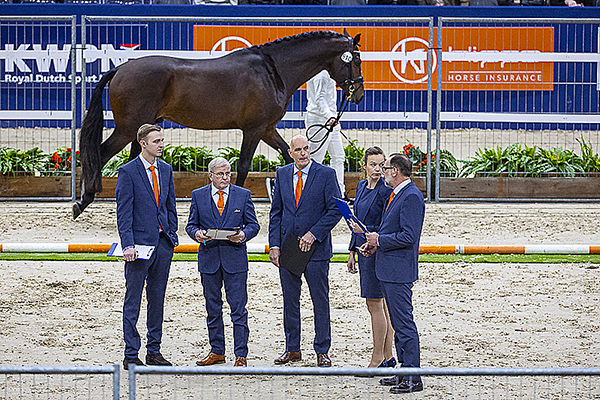
The Dressage Colts
Eighty four out of 251 dressage stallions that fronted the first selection were approved to go on to den Bosch – that’s 33.5%. Those 84 were by 48 sires. The most successful of those sires was a son of Bordeaux, Le Formidable.
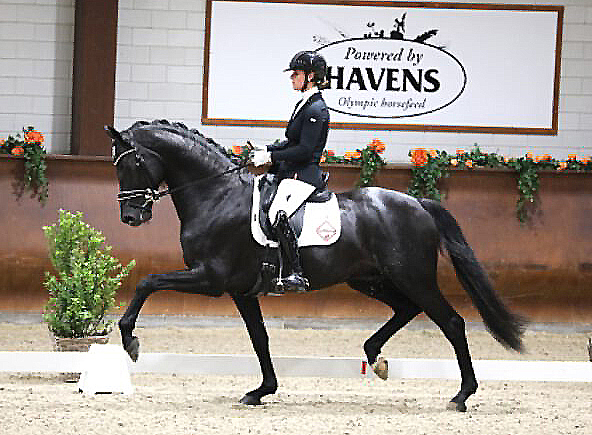
Le Formidable
Le Formidable was the champion stallion at the 2019 licensing, and four years later he is once again in the limelight, this time as the stallion with the largest group of colts to make it through the pre-selection, with nine representatives.
The black stallion has a pedigree that is beautifully balanced with the best of German, and the best of Dutch bloodlines. He is by Bordeaux, whose sire, United combines the blood of two Dutch dressage team members, Krack C and the Trakehner, Partout.
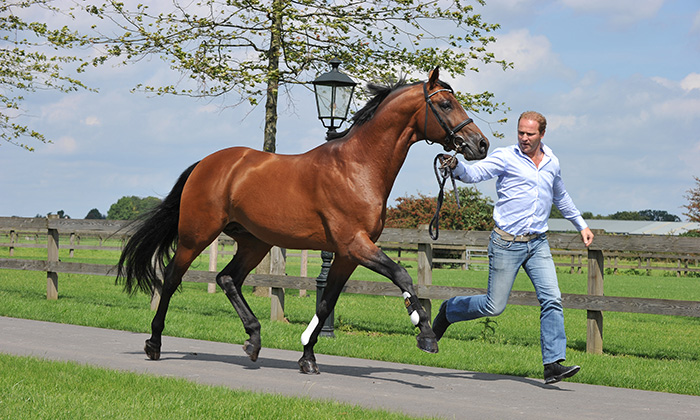
United, combining the blood lines of Krack C and Partout
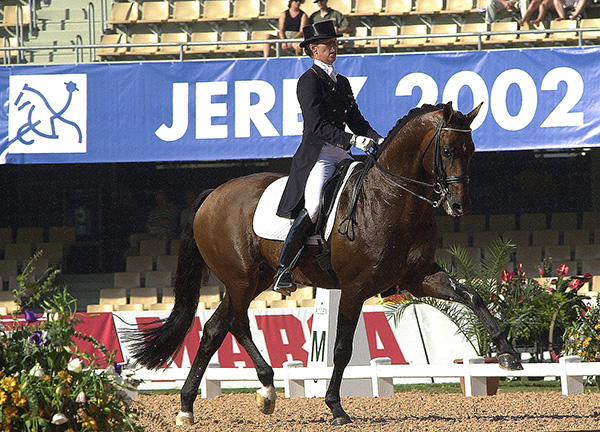
Krack C and Anky van Grunsven at the 2002 WEG
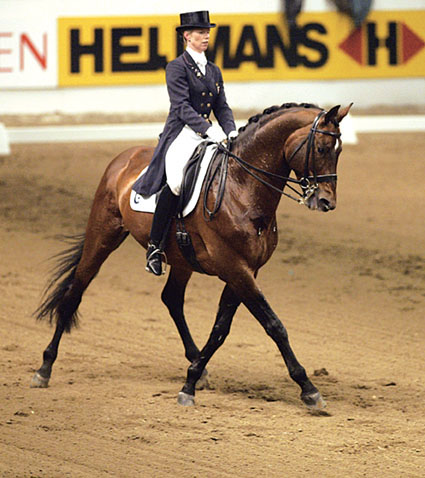
The Trakehner Partout and Anky van Grusven
Bordeaux is out of Venna, who is by the great Gribaldi, out of Leandra M whose pedigree traces to Westfalien royalty. She is by Donnerhall, but out of Roussina by the Romoudour II son Rousseau, and out of one of Herbert de Baey’s legendary mares, Adone, dam of three Grand Prix competitors including Nicole Uphoff’s Gold medallist, Rembrandt.
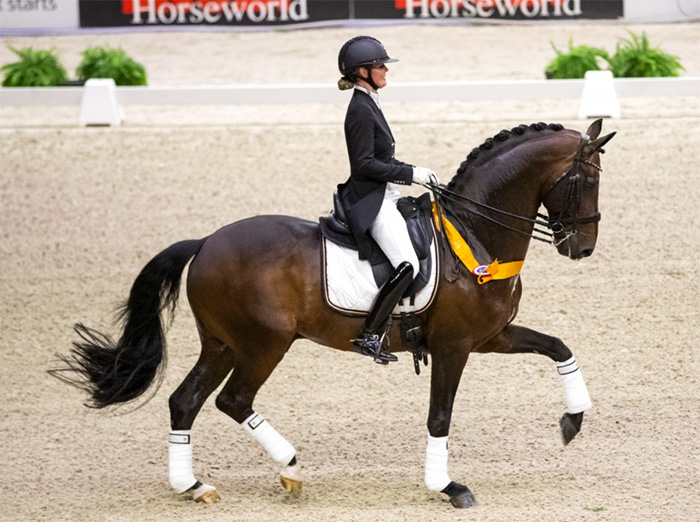
Bordeaux
Le Formidable’s sire, Bordeaux, has been a very moderate performer at Grand Prix, his last GP outing was in June 2019, when he came 13th with a score of 65.196.
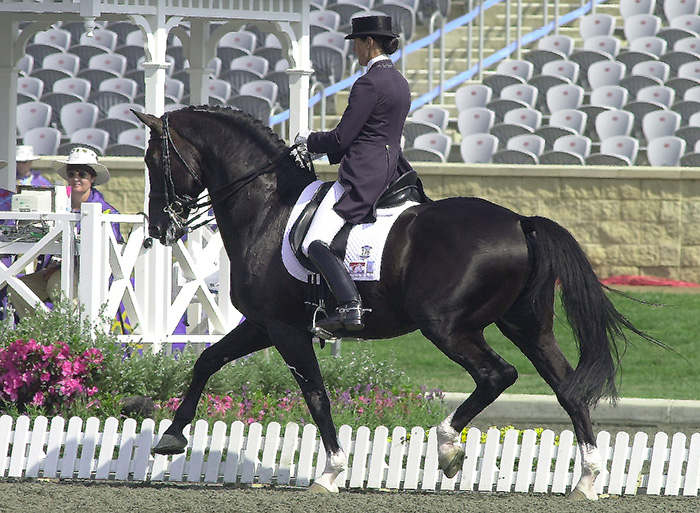
More strength on the dam line, Ferro and Coby van Baalen, also medal winners for Holland, winning a medal at the 2000 Olympics
Le Formidable’s dam line is super strong, his dam Vienna is by Ferro, out of a De Niro mare, with another cross of Romadour II on the last line, through Romancier. Vienna is the dam of the KWPN stallion, Four Legends KS, and she is the half-sister to the stallions Bretton Woods and Chagall.
So far Le Formidable has been the sire of champion foals that have fetched high prices at auction, now the spotlight turns to his colts – and their dams come from an enticing smorgasbørd of dressage sires: Donnerhall, Sir Sinclair, Goodtimes, Charmeur, San Amour, Lord Sinclair and two by Johnson.
Two Le Formidables stand out in the catalogue:
No 470, Pitch Perfect is out of Florenca by Vivaldi out of a Negro / Rhodiamant mare. She is already the dam of the KWPN stallion, Kaiser Weltino (Dante Weltino) who is the sire of one of the colts accepted for this licensing, and another licensed stallion, Jack Sparrow (by the Vivaldi son, Expression). While Vivaldi was a sensation when he first appeared, now several generations on his weaknesses are apparent – he starts to look weak behind, and too long in the back, the hunt is on for a V line stallion that fixes the faults and takes the next step…
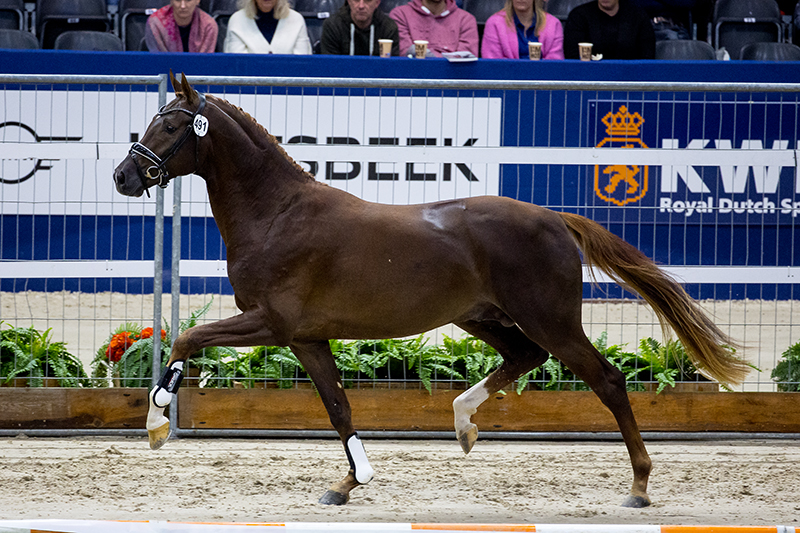
L’Avenir (Photo – Digishots)
The next notable son of Le Formidable is L’Avenir, who escapes having to have a name beginning with P like all the others in the class of 23, because he has already been licensed in Oldenburg whiich follows the German practice of names beginning with the first initial of their sire. L’Avenir is out of a mare by Sir Donnerhall I, but a pretty special mare. Weihe’s Hope is by Sir Donnerhall out of Weihegold. Before we get carried away by Weihegold’s extraordinary career with Isabell Werth, it might be noted that she has produced thirteen foals via embryo transfer, and only Total Hope, by Totilas, has been a star, and a genuine Grand Prix competitor.
One other son, by Sir Donnerhall, Jewels Sir Weiback has competed very very moderately for four small tour placings, he last appeared in June 2019 for a 4th in an Intermediaire I.
There are three stallions with six representatives: Kjento, Glamourdale, Toto Jr.
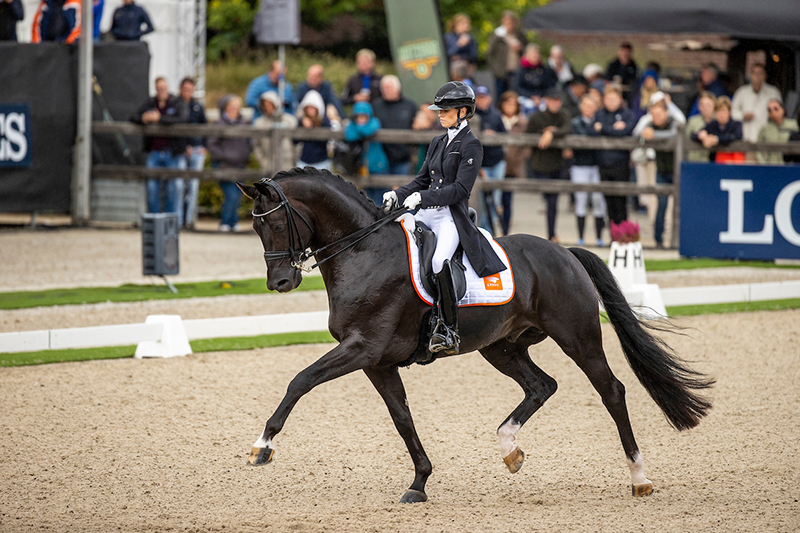
Kjento
Not surprisingly, Kjento is popular. Kjento followed up winning the World Young Dressage Horse 6-y-O Championship in 2021, to go on and win the 2022 7-y-O title. He stands at the Van Olst stables and is by the stallion that ‘made’ Gertjan and Anne van Olst, Negro (Ferro / Variant). Kjento is out of a Jazz / Juventus mare, this is very traditional Dutch breeding, and adds ammunition to the critics who argue that the Dutch mare owners have been too conservative in their choice of bloodlines.
I’ll also be keeping an eye out for number 319, Purple Rain by Desperado (Vivaldi / Havidoff) out of Kjento’s full-sister, Iana (Negro / Jazz)
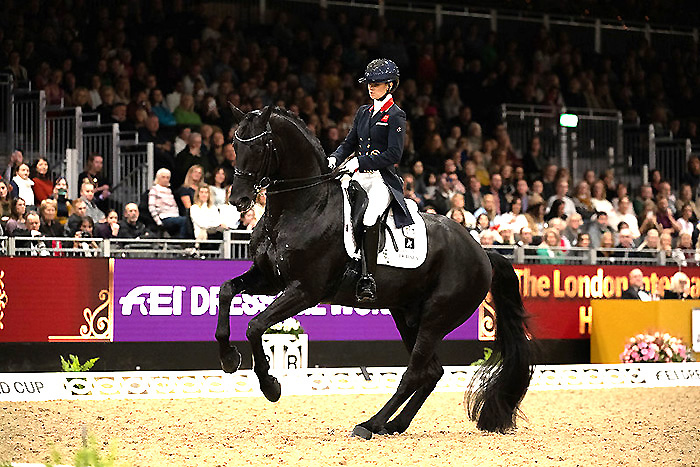
Glamourdale
World Champion at the WEG in Herning, Glamourdale is another Van Olst resident, and the product of their two senior sires, the Westfalen, Lord Leatherdale (Lord Loxley / Ferragamo) and Negro.
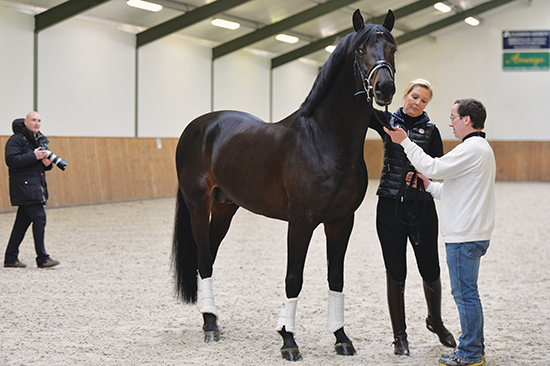
Lord Leatherdale
Lord Leatherdale is twenty years old now and has been a member of the Van Olst team since Gertjan spotted him at the age of two and a half but he is still producing the goods – like Glamourdale.
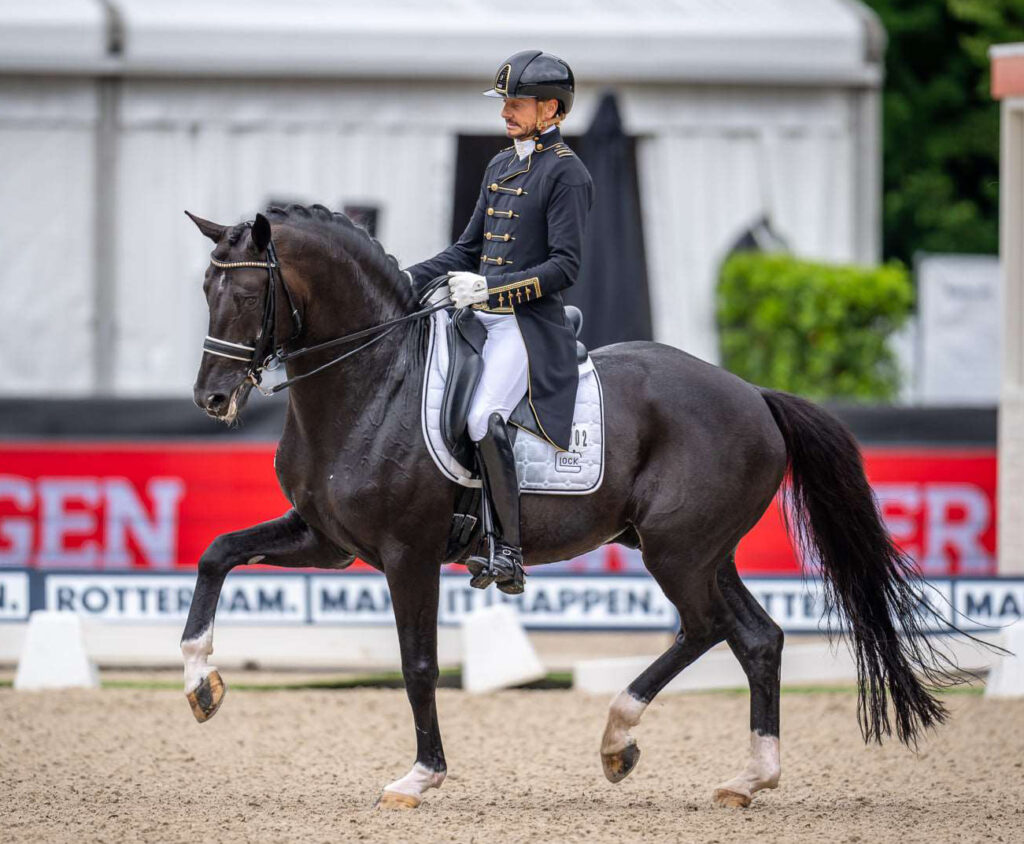
Toto Jr
Toto Jr is another fusion success, he is by Totilas , out of a mare by the German Olympic star, Desperados FRH, who was perhaps the best son of the great De Niro, before his untimely death at the age of nineteen.
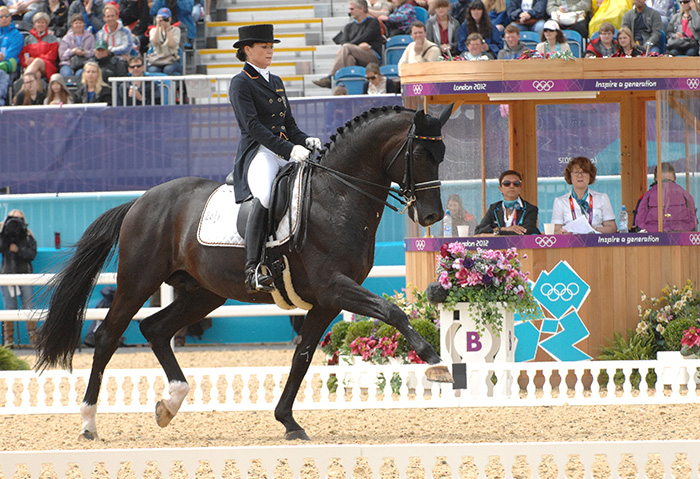
Desperados, the best son of the great De Niro?
The mare line then goes to the very good son of Rubinstein, Rotspon a stallion with a solid Hanoverian base: Argentan, Bolero, Gotthard. Although Toto Jr won only a couple of minor Grand Prix back in 2021 he has been popular with the mare owners despite his modest performance record, unlike Total US (by Totilas out of a full-sister to Parzival) who was licensed the same year as Toto Jr and went to the Tokyo Games with Edward Gal, but who has been largely ignored as a breeding stallion.
2023 sees the arrival of first crops from eight stallions: Jameson RS2, Livius, Lennox US, Lantanas, Ladignac, King Karim, Blue Hors Kingston and Kaiser Weltino.
The van Olst team own, or co-own, nine of the colts, Joop van Uytert presents five, while the Witte-Scholtens stables provide three.
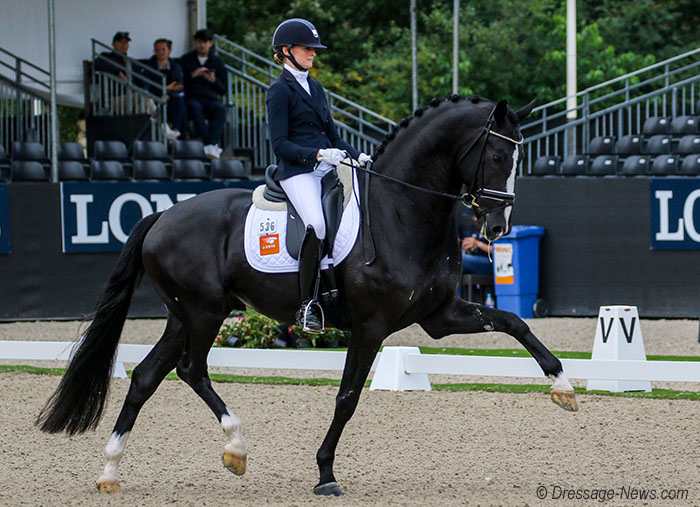
Jameson RS2
Let’s look at the blood concentration in the lines of the new faces. Jameson RS2 features two crosses of Ferro (through Zack and Negro), one of Jazz (Zack’s dam line) and one of Krack C.
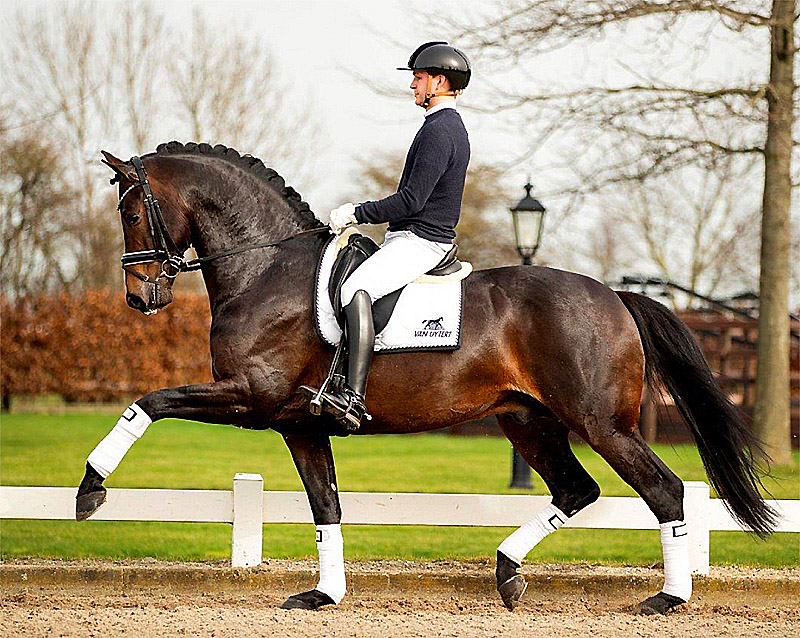
Livius
Livius is by Bordeaux from the famed Utopia line. He has two crosses of Krack C, through United and Vivaldi, one of Gribaldi, and one of the great jumping sire, Nimmerdor.
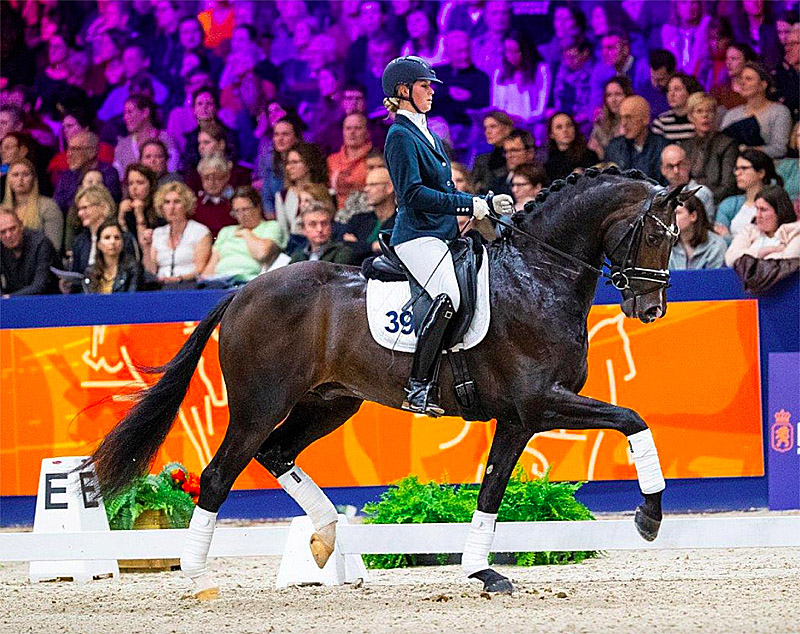
Lennox US
Lennox US who starred at the Worlds last September, third in the six-year-old title, is by the recently gelded Grand Galaxy Win who is by the Jazz great grandson, Apache, out of a Jazz mare. Lennox is out of a mare by the Ferro son, Rousseau, out of a great grand-daughter of Jazz.
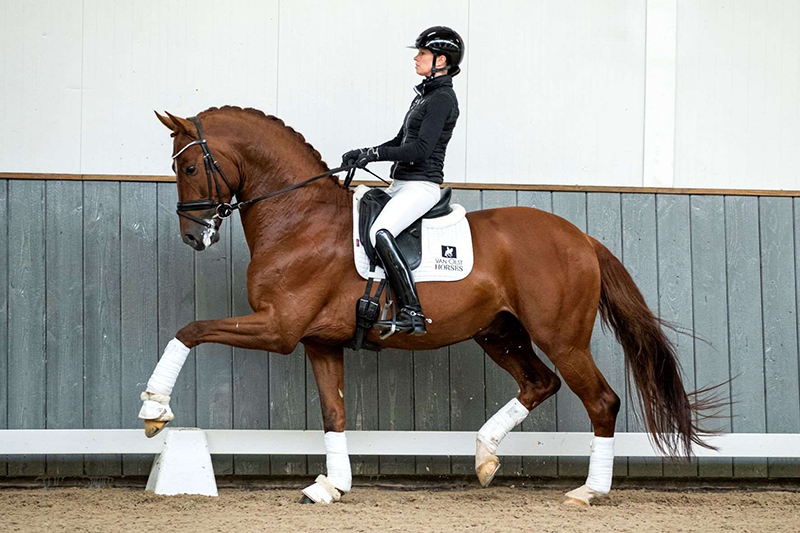
Lantanas
It is something of a relief to get to Lantanas, a complete outcross. The stallion is by Sir Donnerhall I (Sandro Hit / Donnerhall) out of a mare by the Holsteiner Hemmingway (by the Landgraf son Leando) out of a grand-daughter of Ramiro, the pedigree is 50:50 dressage – jumping.
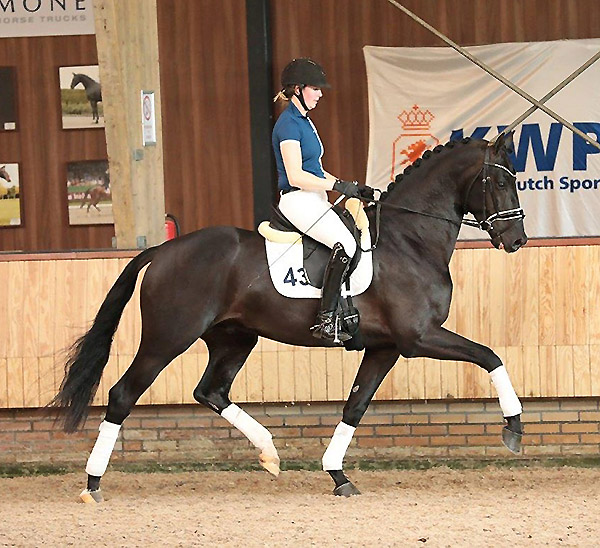
Ladignac
Ladignac is by the Grand Prix dressage star, Zonik (Zack / Romanov) out of a mare by Apache (UB40 / Krack C) conventional enough, but then we take a little trip into Dutch breeding history, an era when the tendency dressage or jumping was not so clearly defined. Ladignac is out of Salvinia by Democraat, who competed on the international small tour with Anky van Grunsven, while jumping at 1.40m level. There’s more history on the next line, Almé and those two founding fathers of Dutch sporthorse breeding, Amor and L’Invasion.
King Karim is by Toto Jr is out of a mare by Painted Black (Gribaldi again) out of a Flemmingh mare.
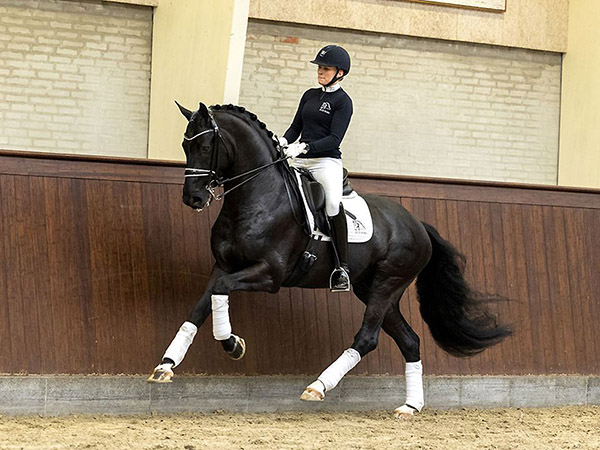
Blue Hors Kingston
Kingston is another by Toto Jr. He is out of Arina by Turbo Magic by Cabochon (son of Vincent, one of the first Dutch stallions to shine at Grand Prix, taking out the National Championship with Annemarie Sanders-Keizer in 1989) out of a mare by another early Grand Prix star, Anky van Grunsven’s World Cup winner Cocktail.
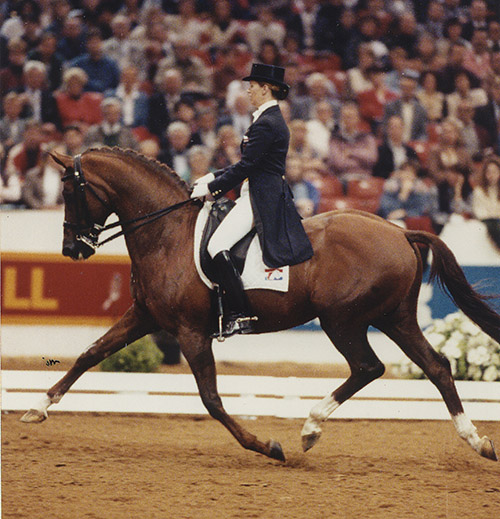
Cocktail, a World Cup winner with Anky van Grunsven
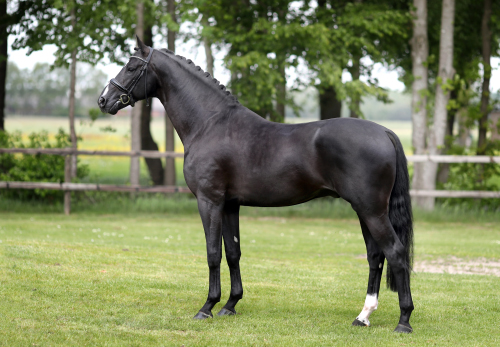
Kaiser Weltino
Kaiser Weltino is by the Swedish Grand Prix star, Dante Weltino who is by the De Niro son, Danone I out of a mare by the best son of Weltmeyer, Welt Hit II. Kaiser Weltino is out of the Vivaldi daughter, Florencia, and we have already looked at her pedigree when we examined her Le Formidable son, Pitch Perfect.
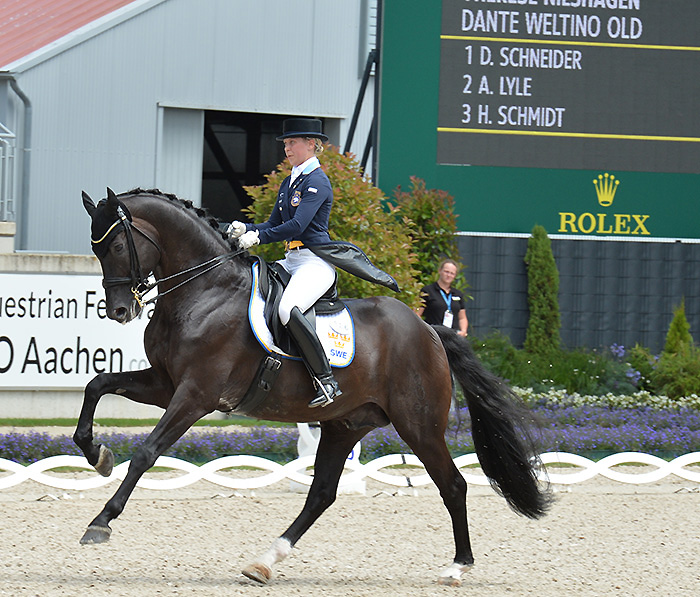
Dante Weltino, a Grand Prix star for Sweden
Looking through the catalogue, it is a little surprising that Vivaldi, who has boomed in studbooks all over Europe, is so sparingly used, just twice as a sire, though he is well represented through his son, Desperado. What is even more surprising is the neglect of Vitalis, who is super popular in Germany and regarded as the next step on from Vivaldi. Vitalis is the sire of just one, while Vitalis’ son, Valverde (out of an Ampere mare) is the sire of two.
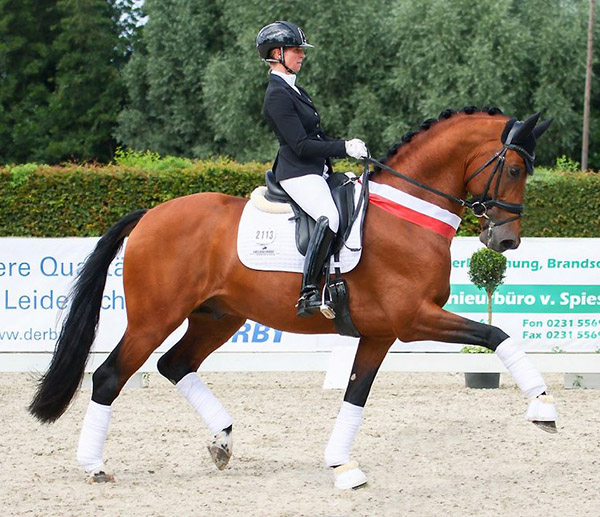
Valverde and Eva Möller
Valverde was a Bundeschampionate star with Eva Möller but she always looked so tiny on his back , the word is that the considerably taller Daniel Bachman Andersen has taken over the ride, good news for Daniel’s many fans who want to see him starring again preferably on a tall horse.
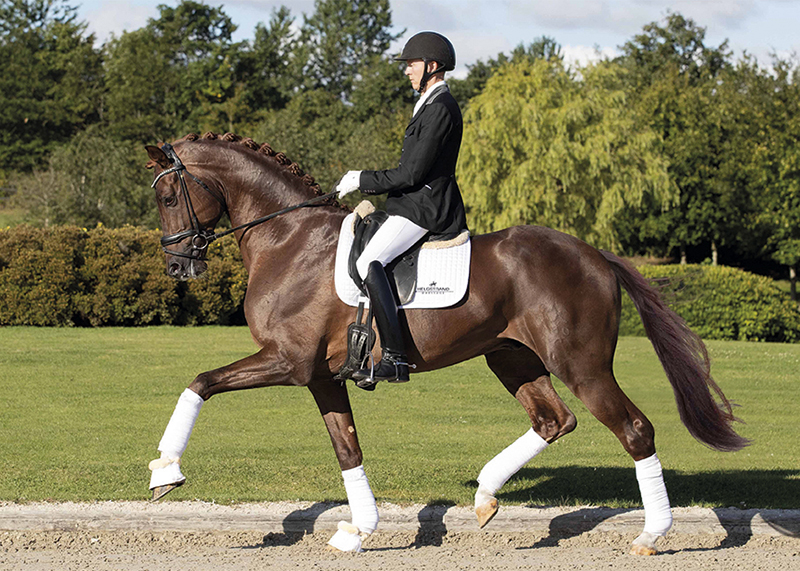
Vivino
Vivino, by Vivaldi out of a Dancier mare, is the sire of one.
Despite the popularity of the ‘B’ line in Denmark, Hanover, and indeed, Oldenburg where the stand out colt of the January 2023 licensing was a son of Bon Courage that went on to sell for €1.25 million, the B line is almost totally absent from the KWPN catalogue the only reference I can find is Belissimo who is the dam sire of Fürst Belissaro, the sire of a colt out of a Fürst Rousseau mare, it is not selected.
The only colt to be selected from the first group is Favorite Son, by Fynch Hatton who is by the Franziskus son, Formel Eins out of a Sir Donnerhall / Weltmeyer mare. Favorite Son is out of a Diamond Hit / Sandro Song mare.
I do love the Apaches, and No 302, Pachanga is by him out of a Desperado / Ferro, and yes, he has that special something. He is selected to go on, as is Purple Rain, the Desperado out of Kjento’s sister.
I’m very surprised when 354, an un-named colt by Franklin out of a Dancier mare is not selected, the horse is really engaged, beautifully balanced and breath-takingly beautiful… the black stallion of your dreams.
Pina Colada, by Governor out of a Dayano / Flemmingh mare is selected, and I am not surprised. I was there the year the first Totilas colts were presented and Governor was the pick of the bunch (he made Toto Jr look a bit ponyish), sadly he was ridden so short and unsympathetically that he didn’t get a chance to shine and was recently gelded.
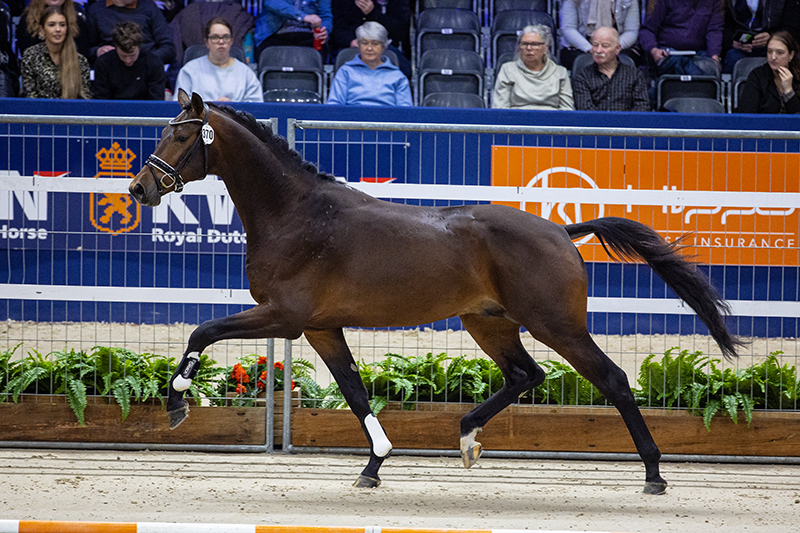
Power Dancing (Digishots photo)
Four of the Glamourdales are selected to go on, with the best of them, Power Dancing out of a Johnson / Rohdiamant / Weltmeyer mare, takes home a premium.
Pablo Picasso represents the third generation of the black pearl’s breeding, he is by the Toto Jr son Taminiau, out of a Florencio / Farrington mare, he is also awarded a premium.
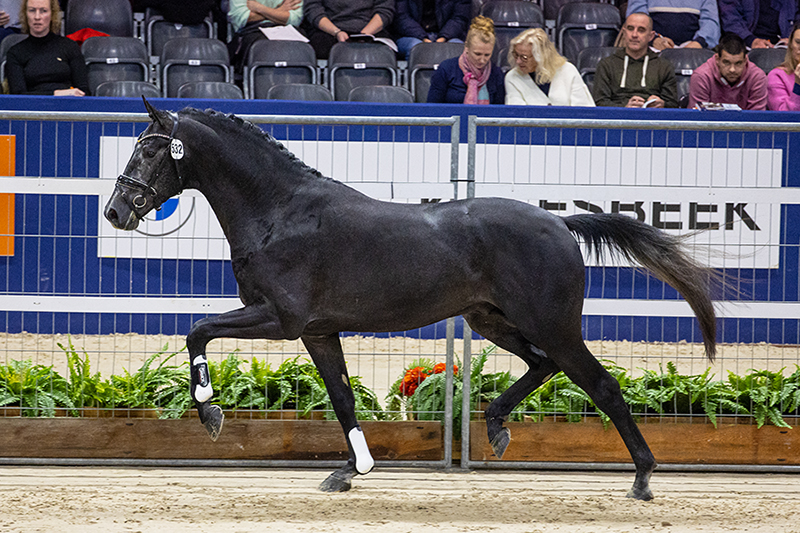
Prisco RS2,
Another premium goes to Prisco RS2, who is by the Sezuan son, Tørveslettens Sylvester, out of a Negro / Krack C mare.
Four Le Formidables are selected, but the one that takes the breath away and gets the pulse racing is L’Avenir, yep the one out of Weihegold’s daughter. I have never seen a stallion take over a show or an arena like L’Avenir did – he just dominated the huge hall with his movement and his presence. Okay the walk might be less than wonderful, but the trot is extraordinary. He too receives a premium.
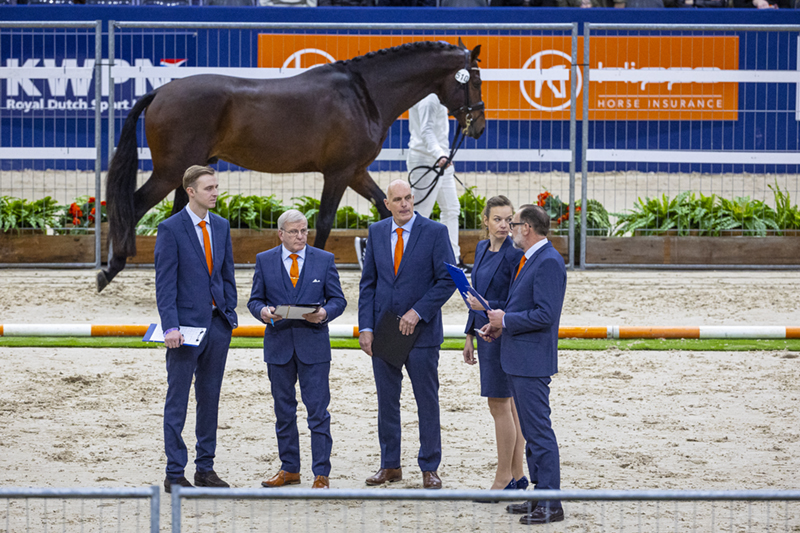
The dressage commission: Sönke Rothenberger, Johan Hamminga, Wouter Plaizier, Floor Dröge and chairman, Bert Rutten (Photo – Digishots
Time to talk to some of the movers-and-shakers. Floor Dröge, a KWPN inspector is assisting the Dressage Commission, Floor is a wealth of knowledge, nearly always delivered with a twinkle in her eye and a laugh not far away, but she is also an impressive mover on the heavy arena surface – in stilettos!
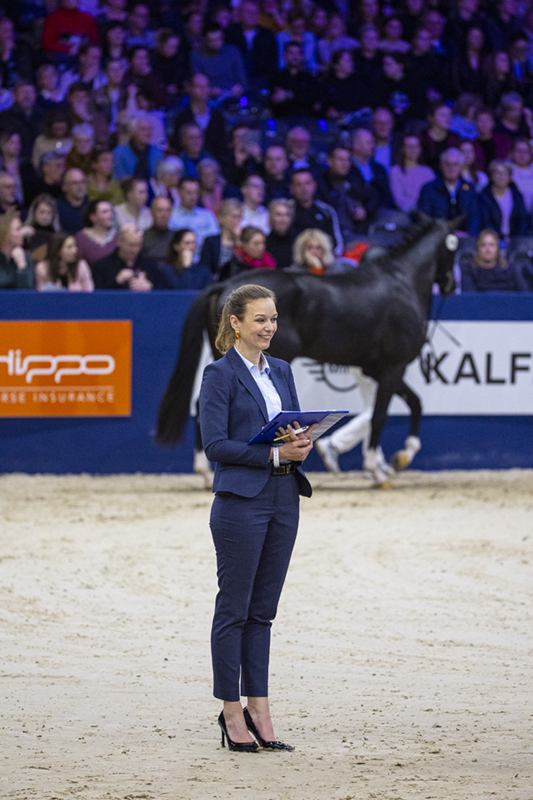
The Le Formidables stood out today, what is your impressions of them?
“I think we have seen a number of horses that are loose through the body, and have a lot of technique in the legs, but the biggest test is coming, and that’s under saddle, how they will perform then? How they will make the connection in the body.”
The one out of Weihegold’s daughter stood out, Weihegold never had a trot like that…
“But then the question is, do you need a trot like that for Grand Prix, that’s the biggest question.”
Such a pretty horse…
“He’s a show boy, he’s always fresh…”
And the look of eagles, maybe just the walk is a little worry…
“Complete is difficult, there is always something you would prefer was a little better, but in a big arena, with the other stallions, the walk is always difficult, it is a gait that can very quickly be affected because of the tension. The stallions see each other, and they start screaming, they get a little tense and the head goes up and then the walk is difficult. That’s why we don’t approve them now, they go to the performance test and then we have a lot of time to see how the walk is.”
The Glamourdales, they went well…
“I think they did, we selected a few of them, and that’s good because we want to see horses in Ermelo and see how they go under the saddle to make a selection, and we would really like to get a couple of good Glamourdales, he’s done a really good job, so then you would like to give the next generation a chance.”
What were the attributes of his colts?
“I think we saw nice types…
At times a little out behind…
“At times, but again, you have to see how that develops under saddle, and sometimes it changes. You could see when they came in hand (the stallions come back for a final evaluation in hand, unlike the first viewing when they are free in the pen), when they came back, the hind leg would go in a good direction. It’s just moments, but they give information.”
Was there any stallion that really caught your imagination that you would take home if you had a chance?
“No, because I never take home stallions, I’m not allowed… There were a lot of stallions with good aspects, but I have learned that you have to wait to judge them when they are ridden, and we have the total package, have that information. So I would never take one home that hasn’t been tested under saddle.”

Bert Rutten is a Grand Prix rider and trainer and provides a clear direction as Chair of the Dressage Commission…
We’ve seen about half your stallions already…
“A bit more than half, we saw seven groups today, and we have five groups tomorrow.”
And your overall impressions?
“We were very happy that we could invite a lot of Glamourdales, of course we want to try the Glamourdales, we haven’t had a Glamourdale approved yet. Of course we will see in Ermelo how it works out, and that’s the same for Formidable as well. It’s the first year for Formidable and we want to know as quickly as we can, how they are reacting under saddle? When you can try a couple, then you get a better impression.”
I was intrigued that there is really very little Vivaldi up close, yes there is Desperado, just one or two by Vivaldi, and Vitalis is hardly used…
“Yes, Vitalis in Germany is really coming up as a producer of Grand Prix horses, we wanted to try him, and we did…”
But there was only one!
The other thing that is intriguing is the total absence of the B line which is very popular in Germany and Denmark…
“We don’t get them offered, we can’t choose them, we can’t force people to come with the German B line.”
But Dutch breeders buy semen from all over Europe…
“Of course, it works both ways, Germany buys here, and vice versa.”
So why the reluctance to look at the B line?
“To be honest, not a clue.”
Are you happy with the number of new lines the breeders are introducing?
“With the young lines, you just have to see how it develops. The proven lines we know more or less what they bring. What you see is that more and more, little by little, the breeders are choosing the more proven lines and of course now they have much more choice to choose the stallion that has performed at Grand Prix level. When the stallion has competed and performed at Grand Prix, I am convinced that the chance is great of the offspring having that talent – it’s not one-to-one, but we see a greater chance. With Totilas, with Gribaldi, with Jazz… Donnerhall, De Niro, all the stallions that have done Grand Prix themselves have more offspring that will do Grand Prix, it’s hereditary without a doubt.”
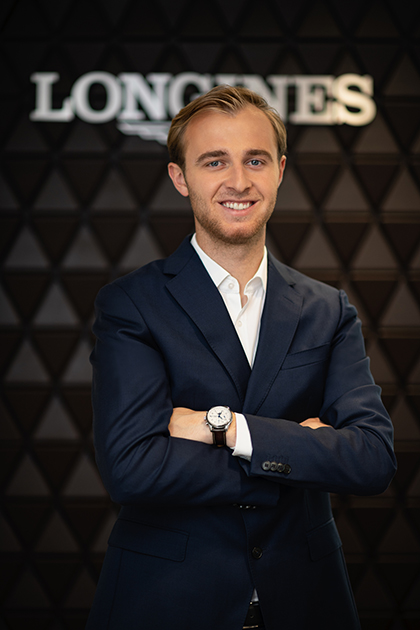
Time to talk to Sönke Rothenberger who has been invited to sit in on the commission…
Last time I talked to you you were wowing everyone with Fendi in the Louisdor, now it’s quite a different rôle…
“It’s quite a different task, it’s a privilege to scout these stallions together with these renowned horse people, here in The Netherlands, one of, if not, the biggest dressage studbooks in the world. When they asked me if I would like to join them as an aspirant, I didn’t need a lot of time to think about it. To get behind their insights into each horse, what aspects of each horse they cherish most, what concerns they see in young horses, is a once in a lifetime opportunity.”
Looking at the horses today, what did you like?
“At the end of the day, what I am personally looking for is a good riding horse, a potential Grand Prix horse, so you can only judge these horses going free, with certain limits, you can only make an educated guess of which horse might be a good Grand Prix horse, that’s the limit. We saw a small group of very good horses, but in every breeding association, you only have a small group of these really good ones. We saw good dam lines, and really interesting bloodlines, it’s difficult to pick, but for example, Hermes, there’s not a lot of Hermes offspring. Both Hermes and Dalera are by Easy Game and they have a lot of potential for piaffe and passage. So it was good to have a Hermes here, maybe not the most spectacular, but you could also imagine that this horse could do a really good piaffe / passage.”

Hermes
“Of course I don’t have a vote in the selection, I just look and see what choices they pick, and hear what they talk about.”
And the Le Formidable out of Weihegold’s daughter, you would have been in the ring with Weihegold often, but she never had a trot like that colt…
“I’ve seen that horse a few times because he also did the Oldenburg licensing, so I saw him at the pre-selection, I saw him in the pre-selection for here, and now I saw him here again. I must say it is a horse that moves like this all the time, it seems to me that for him it is a natural way of presenting himself. At the end of the day, the future will tell is he is a Grand Prix horse, his father still has to prove it, but I think his father was one of the most spectacular champion stallions here a few years ago, now to have one like that out of his first crop of foals, and having one like that who moves similar, that’s a good start.”
Everyone keeps telling me how impressed they are with the depth of your breeding knowledge, has this always been something that you’ve been interested in?
“Yes, I am always very interested in breeding. What fascinates me most is to look at these horses at an early stage and noting what aspects you think are very valuable in these horses, then looking back when they perform at a top, top level, and try to evaluate if the way I am looking at a young horse, is actually the right manner of judging a young horse.”
“For me, it centres on the walk, the young horses must have a really clear rhythm in the walk, and if for one moment they show relaxation here on hand and show a good walk, that is what I think is the most important. Let’s be honest, even with those Grand Prix horses that show a fabulous walk, I doubt if as young horses in hand, with the atmosphere here, they would show that fabulous walk for twenty, thirty metres on a circle. It’s always really difficult to judge the walk when they are free, the rider can give them more stability and support, and give them more relaxation because they feel safe with the rider, it’s harder free or in hand. It’s one of the reasons I’m here, to learn more about these things…”
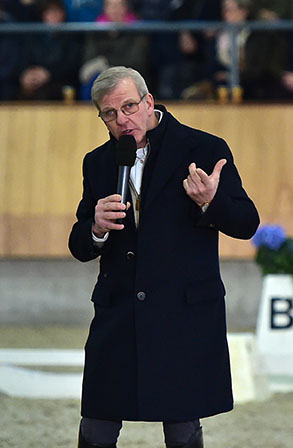
My dear friend Johan Hamminga has been a key player in Dutch dressage breeding for many years. Johan was the test rider for a baby Jazz, coaxing the timid colt to unwind when he was in danger of being sent home. He is also a wonderful trainer of dressage horses, working on clear classical – horse friendly – lines.
I asked him what he had learned after two days of watching eighty-four young stallions?
“From Gertjan van Olst we have Kjento and Glamourdale, and they produced some very good offspring. Both stallions are World Champions in Ermelo and Herning. It’s very important for our studbook to give the breeders a boost to breed such a horse.”
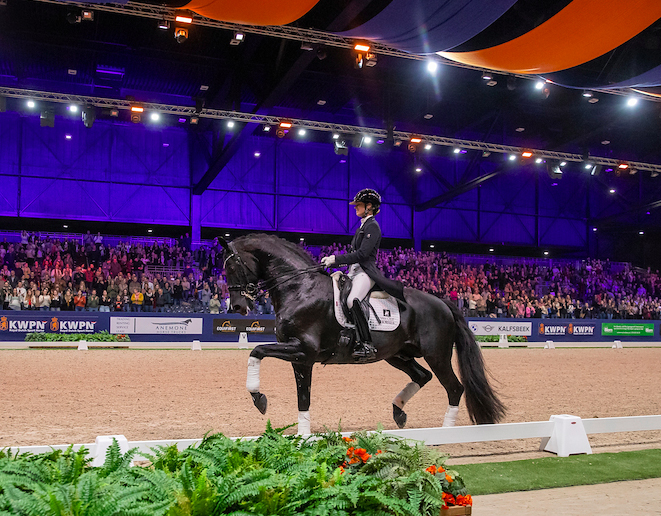
Glamourdale was a welcome visitor to the stallion show
Is it a problem that those two stallions are from bloodlines that have been used over and over again in Holland?
“It’s not a problem. Breeding for dressage has been happening for twenty, twenty-five years. We have two breeders who have been breeding for dressage for forty or fifty years, but in general it is only in the last twenty years that we have specialised jumping and dressage. When you want to breed a dressage horse, it is very important that you have a dressage horse from a dressage horse, from a dressage horse, four generations. Now we have four, five generations of dressage horses, so we can also expect that we breed a dressage horse. But when you have one or two generations of dressage horse, then it’s going to the left or to the right, that’s very important to remember.”
“Yesterday evening I told the breeders that when you are trying to improve your mares, do you want a better hindleg, more collection from behind, or you need more front or neck, or more lengthening in the frame, there’s only one aspect that you can make better, not two or even all of them. One. And when you want to make that one aspect better, then you have to look to the stallion you have chosen, and make sure that also in the dam line of the stallion that aspect is there in the dam line for two or three or four generations. Then it is sure you will get a better product. When it is not in the stallion’s dam line, then he cannot give it to his offspring. Impossible.”
“It’s very important for breeders that they look to the dam line of the stallion. When you are breeding to a stallion with a dam line from, say, Ferro, then you are going to get a very strong hind leg, the offspring will have a better hind leg.
“But when we look at the offspring from the line of Vivaldi, then you get more front, more front leg. Vitalis and Vivaldi, they make a lot of offspring with a lot of front, and there’s a lot of uphill built horses from that line – and you get rideability. The offspring of Vitalis and Vivaldi are very good to ride. It’s the same with Dream Boy, and Desperado.”
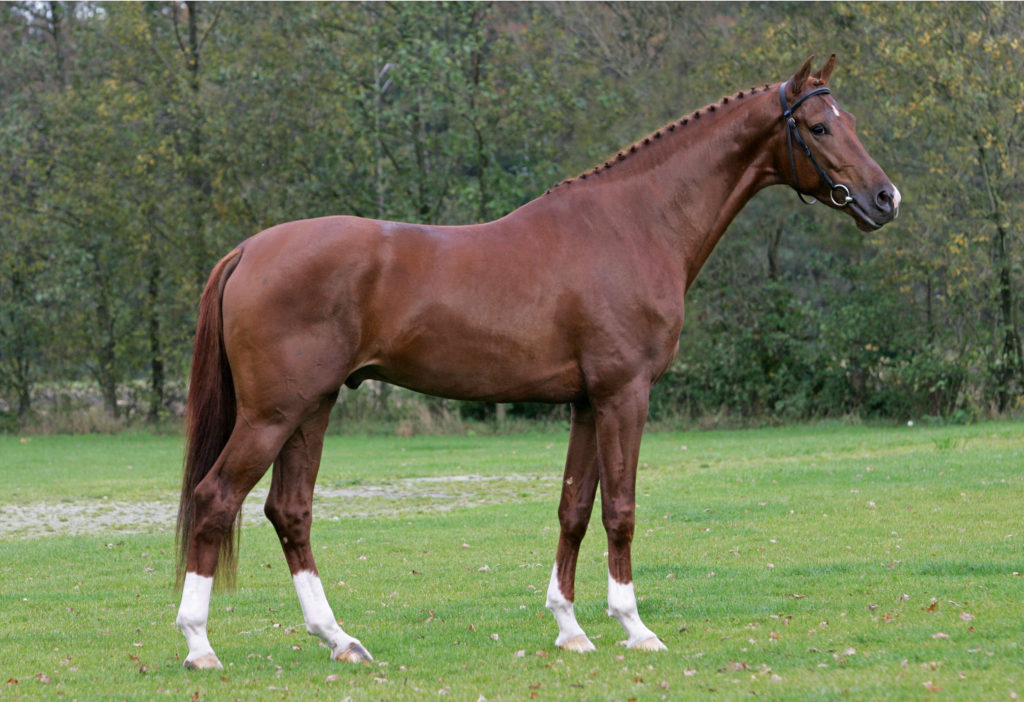
“Vivaldi, offspring with a lot of front”
“Vitalis and Vivaldi, they make a lot of offspring with a lot of front, and there’s a lot of uphill built horses from that line – and you get rideability.”
Looking to the new stallions, what did you like about the progeny of Le Formidable?
“We want to test some of those offspring of Le Formidable, because then we’ll know better, how are they to ride, how are they in the test? How are they to work? To handle? What is their character?”
“In the first year of a stallion, you don’t have to test so many, because in the second and the third year, you’ll get better horses. The breeders have all seen the first collection of Le Formidable, and they know, oh he gets more lengthening in the frame, he needs a better back, or a better hind leg, he needs more blood in the dam line, or he needs more stability in the dam line. More old fashioned horses, or more modern horses. You know that, and then you get better horses.”
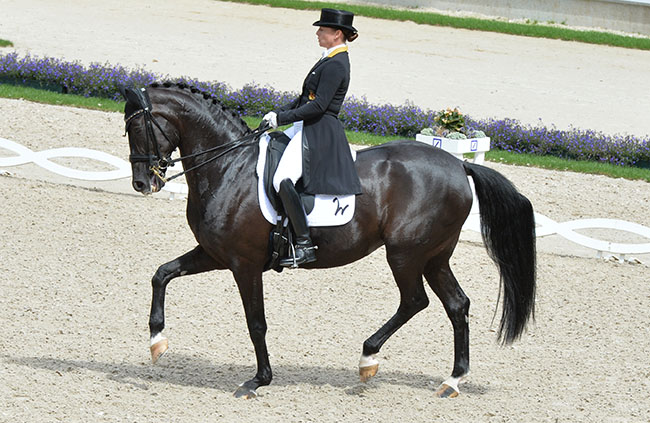
Weihegold, the best mare in the world, important to test the son of her daughter…
He certainly improved the trot of Weihegold, she had a modest trot…
“But a high level of rideability. She is by Sandro Hit and that gives a lot of blood, and expression. That was the best mare in the world, Grand Prix to 90%, that’s why it is important to test a horse like the Le Formidable out of her daughter.”
At the press conference one of the Dutch journalists was giving you are hard time about no B line at the licensing…
“I think you have to look to other lines, the B line in Germany is a better line, it makes better horses, but you can’t always just transfer from one country to another and it works. I know in the jumpers, the F line from Furioso, in Holland we had Voltaire, 1.62 in height, he was the best of Furioso. Landgraf in Holstein was one of the best horses, but he didn’t make progress with his sons in Holstein. In Holland we had Burggraaf and Libero, the best sons of Landgraf every time. So it is possible to get a horse from a neighbour who is better than he is at home.”
“We also had from Germany, Zeus (In Holland he was called Nurzeus). In Germany he was the top of the bill, in Holland nothing. Combined with German horses, he was top, and with Dutch mares, nothing. How is that possible?”
“We are looking for horses from other countries to give the breeder a wider choice, so that we avoid in-breeding. For us, Germany and Denmark are the best countries to look at for a dressage horse, but we remember it will not always work, we have learnt that.”
You think Dutch breeders will look for B blood?
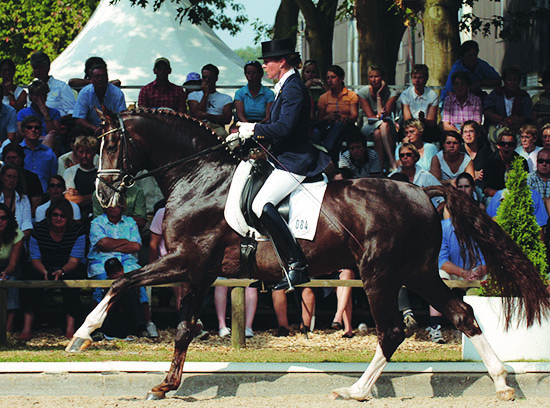
Belissimo
“Yes, for example Belissimo gives a high level of rideability, so it is good for us to have some of that bloodline. It is easy now because semen is flying all over the world. Fifty years ago when you asked a breeder, where have you covered your mare? Oh by Chris’ horse, and they don’t know the name of the stallion, those days are long gone. Now there is semen from all over the world, and that’s a good thing, we can use that to make our breeding better.”
Like the Germans were very happy to get Vitalis…
“There were a lot of Germans here at the stallion show. The stallion committee from Hanover was here, the committee from Oldenburg was here, some of the stallion committee from Westfalia, to look and say, hey we need that one, and that one. That’s good we can make all the studbooks better that way.”
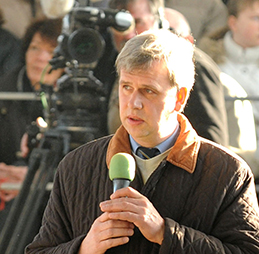
One of those foreign sets of eyes belonged to Jens Meyer, although my friend has undergone a sea change since first I met him thirty years ago. Then he was, like his father before him, a loyal Hanoverian breeder, and he went on to establish a powerful stable of top Hanoverian stallions. Like horse breeding itself, Jens has become universal, he advice is sought by breeders and breed societies around the world, and he is contracted to Blue Hors as a special advisor, and roving buyer looking for exciting stallion prospects irrespective of geography and studbook…
What were his impressions of this year’s KWPN show, and this year he had a personal interest, bringing three Glamourdales from Blue Hors to the testing, one out of a full-sister to Kjento.
“I come with another view, for me, it is interesting to see what each stallion is capable of doing, and try to build a bridge from the licensing, to the horse under saddle, and then to the foals. The foal business now is completely different, we don’t have the farmers any more, now it is big studs with really specialised persons who produce foals that they can sell. For me I am very proud, I bought three Glamourdales, three years ago. One is licensed in Westfalia, and one here, so you have the right taste three years ago. What we need for the new generation, that Blue Hors can produce stallions for the breeders to use.”
“What is good here for me is that if the horse is not licensed, he can come again in eight weeks and be tested under saddle. For a commission, they must judge what they see here, but in the end we want a riding horse, and we must look for the construction that works under saddle. We have seen it in the past where we have had stallions that do not have nice conformation, they were performance test winners, but they get no chance to make no foals, and the stallion must make foals to succeed.
What did you like about the Glamourdales?
“Okay he is the World champion, but what is important for me is that the progeny are really sportive horses. I like how he is able to do this. When he was a young one, it was really interesting to see with this huge canter, could he make it small, and he is able to do it. With the Hanoverians, we need canter, and if you have a huge canter that can be made small, that it very good, but there are not so many who can do this, that makes Glamourdale very interesting.”
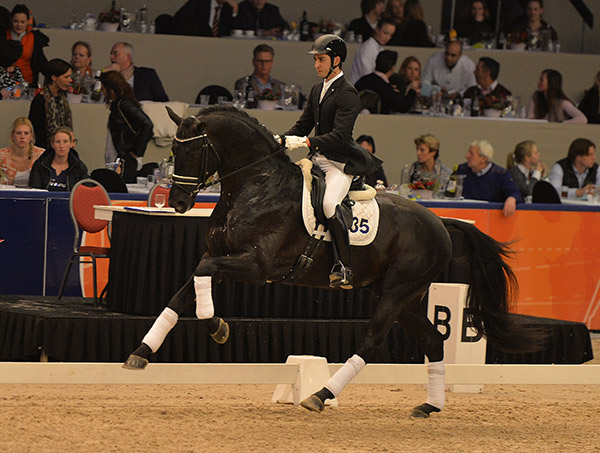
Glamourdale – always had that canter…
What did you think of the Le Formidables?
“I will wait, I am surprised, he made a medium test, and I am surprised with what he produced on phenotype, and now good foals, I like them. We’ll see what they do under saddle. Right now I am not going out looking for a Le Formidable, but if they can show under saddle, then I am looking. We need stallions that produce phenotype, and for this he makes good, he gives longer legs, a good front leg, and we’ll see what the horse is able to do. Interesting horse.”
We haven’t seen the Toto Jrs yet…
“Tomorrow we’ll know more. He makes not such shiny foals, but the brain is really super, it looks like they will be really sportif horses.”
Why don’t they use any B line in this country?
“I think when we have the right one, it will come, but every country has their own lines, their own ideas in the construction of the horse, but I think in the future the B line will come. When we think now the influence of Vivaldi is very big, especially in Hanover, this is twenty years ago here, so sometimes it needs time to move a line.”
“It is interesting to see that this licensing system works. Last weekend in Amsterdam in the World Cup Grand Prix we had four licensed stallions competing and one – Hermes – won.”
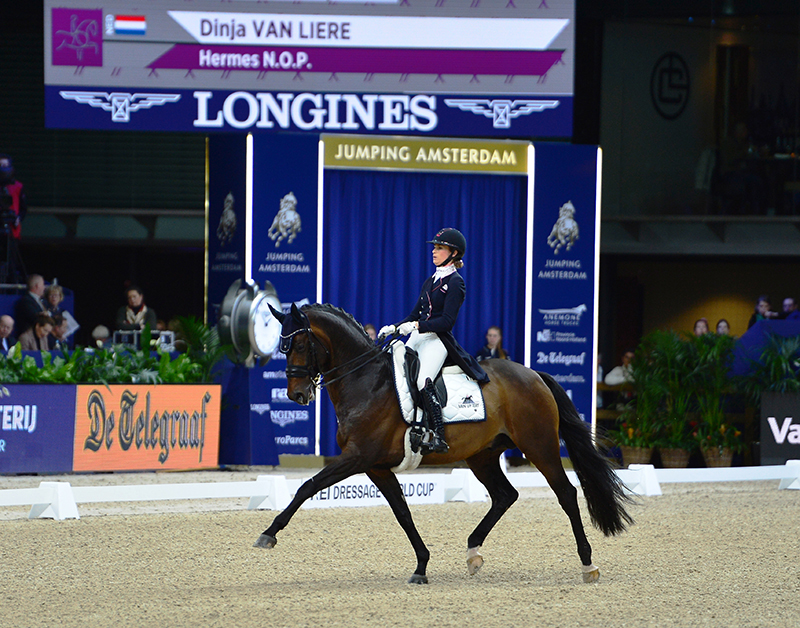
Hermes in Amsterdam
The commission crowned seven premier stallions:
L’Avenir (Le Formidable / Sir Donnerhall)
Power Dancing ( Glamourdale / Johnson
Prisco RS2 (Tørveslettens Sylvester / Negro)
Pablo Picasso (Taminiau x Florencio)
Plusfour (For Romance / Apache )
Perle ( Kjento / Tuschinski )
Pride (Secret / Apache)
The commission selected 26 another to go on to the second phase, the performance test at Ermelo:
Favorite Song PS (Fynch Hatton / Diamond Hit)
Pio Cesare K (Vivino / Negro)
Pachanga (Apache / Desperado)
Pirelli (Just Wimphof / Governor)
Purple Rain V.O.D. (Desperado / Negro)
Pina Colada M (Governor / Dayano)
Paparazzi Taonga ( Vitalis / All at Once)
Paddington Geuzenhof (Lantanas / Krack C)
Puccini (Le Formidable / Lord Sinclair)
Party Edition A (Livius / Florencio)
Pitch Perfect (Le Formidable / Vivaldi)
Private Dance (Le Formidable / Johnson)
Paso Doble VZ (by Glamourdale x Tango)
Princeton (Glamourdale / Don Schufro)
n.n. (by Glamourdale / Londonderry)
Pantheon L.E. ( Hermes / San Remo)
Puronn L (Blue Hors Farrell / Rubin Royal )
Parero ( Toto Jr. / Negro)
Power Dutch ( Toto Jr. /x Double Dutch
Phantom (Toto Jr. / Metal)
Paycheck Texel (Toto Jr. / Ferro
Proud James ( Jameson / Johnson)
Pontiac VDT (Total U.S. / Ferro )
Prince (Kingston / Tango)
Pjento Naomie ( Kjento / Desperado)
Palermo E ( Kjento / Bordeaux)
The KWPN stallion show really is one of the highlights of my year. The chance to see horse after horse, to study the bloodlines, and talk it over with experts from all over the world… if you feel inspired by this report drop me a line info@horsemagazine.com and next year we’ll organize a little tour, taking in the stallion show, and some of the top studs and trainers along the way.

Australian dressage breeders: are you looking for the best European lines for your mare? Find out what’s available in Australia from International Horse Breeders- Go to www.ihb.com.au



I was really impressed with Le Formidable’s colts. They seemed to have a presence and a brain at the same time. The walk under saddle may improve with the confidence of a rider to keep their minds focused on the job at hand, and not distracted by the Free Running of the Rung or even just being shown In Hand. It will be interesting to see how all these stallions fare when under saddle at Ermelo.. Best Regards from a Retired Paramedic and FEI Level 2 Trainer and Coach in Ontario, Canada, Jenn. 💖
Thank you for this terrific article on the recent KWPN Stallion Show. As a small-time breeder in the US, with two small children, it’s not easy for me to travel. I watch Clipmyhorse as much as I can, but articles like yours really help me to get a more in-depth perspective on the current breeding trends and what stallions are producing. It’s infinitely helpful for breeders like me who can’t be there in person. So thank you once again, and I look forward to your future articles!